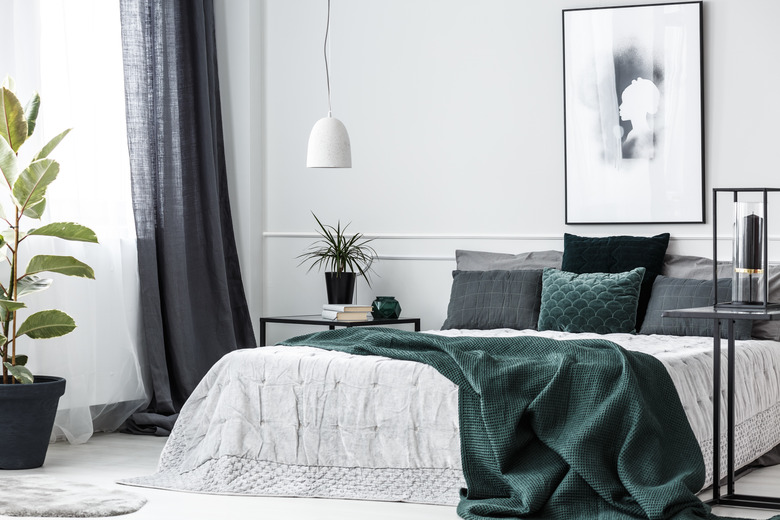How To Hang Drapery Hooks On Rod Pocket Curtains
We may receive a commission on purchases made from links.
Rod pocket curtain panels are a good choice of premade curtain styles to convert to more elaborate drapery styles. The rod pocket is internal so the curtain panel is essentially a simple panel rectangle. This makes the conversion process simpler and easier. Determine the header style you want for your drapery look and in a few minutes, you can transform your curtains into pleated drapes that use drapery hooks.
Hanging Drapery Hooks on Rod Pocket Curtains
1. Measure the Window
Measure the width of your window. To create a header to use with drapery hooks you need to use pleat tape or gathering pleat tape. You can also stiffen the fabric with buckram header, which is an interfacing material sold at fabric stores. Your total curtain width should be based on your finished pleat calculation, generally using two to four pleated panels that are at least 2 to 2 1/2 times the width of the window.
2. Sew Curtain Panels Together
Use an online pleat calculator to determine the width of flat panel you need for the finished width of pleated drape. Sew panels together along the side to create the necessary width.
3. Cut the Pleat Tape to Size
Place your premade curtain panel face down on the work table. Measure across the top of the panel. Cut the pleat tape to the width of your curtain panel. Gathering pleat tapes have cording to assist in creating the pleating style you have selected for your draperies.
4. Pin the Pleat Tape
Pin the pleat tape 1/2 inch from the top edge of the curtain. Turn the ends under 1/2 inch for a nice end finish. The pleat tape should be drapery loop side out. Some pleat tapes have pockets for the drapery hooks; don't sew over the ends of the pockets.
5. Sew the Pleat Tape
Sew your pleat tape to the curtain panel starting at the top left side. Sew your seam from left to right, above the pockets and cords; then sew additional seams from left to right. Sew vertical seams to top stitch the ends to the panel, sewing over the cords on the left side and pulling the cords loose on the right side before sewing the end of the pleat tape down.
6. Gather the Pleats
Pull on the cords on the right side while sliding the curtain toward your left. Gather the curtain in the pleating design you have chosen. Tie off the ends of your cords together when you reach the correct width you need for your window. Loop the ends of the cords and pin them to the back top of the curtain with a safety pin.
7. Adjust the Pleats
Turn the drapery right side up. If you are using a pinch pleat design adjust the gathering so you have three pleats gathered together followed by a space. Straighten out your pleats to remove any twisted fabric. Pinch the three pleats together at the bottom of the pleat tape.
8. Tack the Pleats
Sew a tack stitch through the three pleats using needle and thread. Repeat for each set of pleats. If you are using a goblet pleat design, stuff the top of your pleat with tissue paper after you sew your tack stitch.
9. Add the First Drapery Hook
Turn the drapery face side down. Insert the drapery hook into the center of the pleat or gathered set. The hook point faces upward and the hook faces downward.
10. Attach to the Curtain Rod
Hold your drapery up to the curtain rod and insert your first hook into a plastic slide. Support the fabric while allowing the edge to drop. This will allow you to see if you need to adjust the hook. The bottom edge of the fabric should just brush the top of the floor.
11. Hang the Panel
Adjust the placement of your hook so that the fabric length is correct. Measure and match the hook placement for all of the remaining pleated set areas so that the drapery panels will hang level. Hang the panels on the curtain rod.
